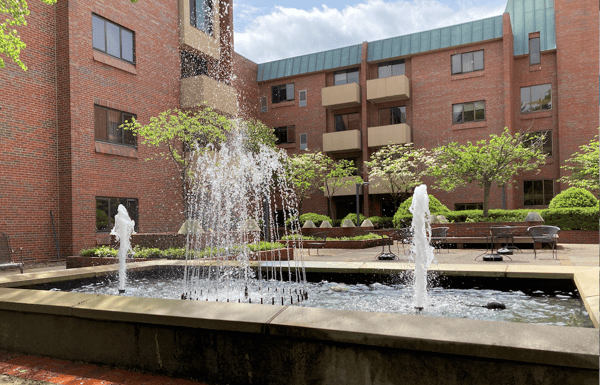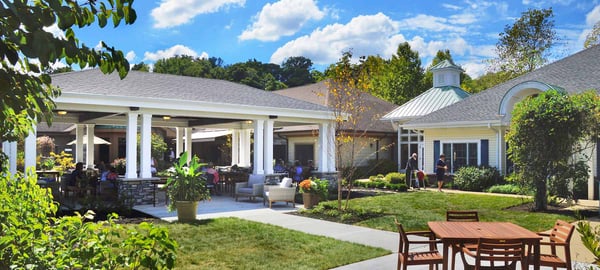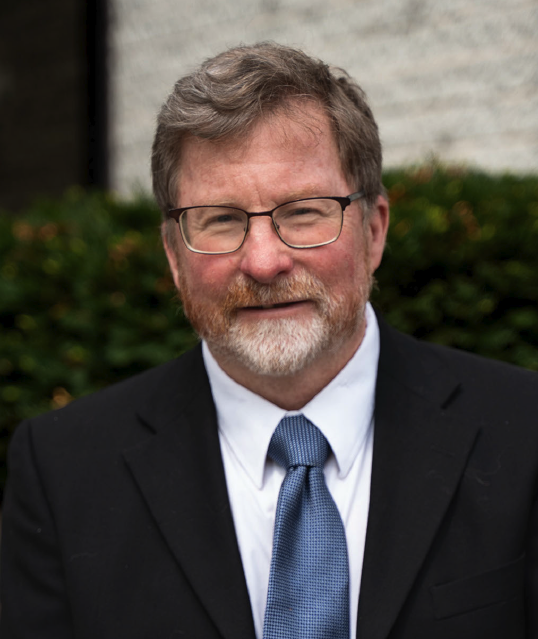An ERS team convenes at least twice a month to discuss situations that could arise, as well as occasional issues that have, to take steps to prevent issues from happening. Team members also share recommendations for safety improvements with managers across all ERS campuses.

Episcopal Retirement Services' continuing care retirement communities (CCRCs) are premier-living retirement campuses located in Cincinnati's Hyde Park neighborhood, and Louisville's suburban Graymoor-Devondale area.
On constant lookout
A recent example of the care ERS leaders take was the thoughtful planning that happened before a telephone-system upgrade in late September.
ERS VP of Residential Healthcare Beverly Edwards, who leads the nine-member safety team, said even though the upgrade was made at night to minimize the impact, everyone on the team was quite aware that ERS’ continuing care retirement communities (CCRCs) operate every hour of every day.
“CCRCs never close and we always need to have a means to communicate with our residents, family members, and clinical professionals as we carry out our work,” she said.
A CCRC is a retirement campus that provides independent-living houses or apartments, plus a variety of care levels that are available when residents’ healthcare needs change. Those care levels may include independent living, assisted living/personal care, memory care, long-term care and short-term rehabilitation.
Since ERS communities never close, its administrators, directors of nursing, director of hospitality, the CEO and Edwards had to evaluate which systems and processes the phone conversion would impact. They then planned alternative methods to keep everything running smoothly.
All residents, families, medical professionals, and others were informed what would happen, and how long it would last. They were given alternate ways to contact ERS team members. Residents were reminded if they were going to be out during those hours to take their key cards with them. Additional security guards and managers were on duty in case they’d be needed.
“The conversion went very well because of the team planning,” Edwards said.
Another thing Edwards’ team does is look for learning opportunities before something goes wrong. “We also like to learn from near-misses,” Edwards said. “Sometimes, a negative incident does not occur, but it could have occurred, and we still like to discuss those near misses to minimize or reduce the chances of that near miss occurring within one of our other communities. So essentially, we learn from one another.”
It is proactive, she noted, to share information about near-misses with other ERS communities, to avoid or minimize a similar problem for them sometime in the future.
Related blog: It’s a blessing to ‘feel safe’ in a retirement community

A fountain in a courtyard on the Marjorie P. Lee campus
Thoughtful leadership
ERS prides itself on progressive thinking, and innovation in the field of providing life-enriching homes and care for older adults. In fact, the ERS Mission is, “We enrich the lives of older adults in a person-centered, innovative, and spiritually-based way.”
ERS’ leadership team took great care in protecting residents and team members during the COVID-19 worldwide epidemic. During that time, the panel met at least weekly, and sometimes daily, updating policies and procedures, to make sure they were implemented on the ERS retirement campuses.
The team tracked positive COVID results and traced the people the person with COVID had been in contact with. The team created fliers and signs in the communities about social distancing, proper hand hygiene and proper wearing of masks.
“If there was a positive COVID test, we acted quickly,” Edwards said. The team implemented various policies to try to keep everyone safe.
One thing ERS did sooner than many other organizations was create a “nest” – an area that was blocked off to care exclusively for residents who had COVID, separating them from people in other parts of campus.
“We needed to have a skilled-nursing area that could care for residents within the nest,” Edwards said.
“As we learned, we had to act swiftly to implement measures, having all nine of us jump on calls” or via secure texts, she said. “Just knowing that we had each other to think through measures and to employ strategies to keep our residents and staff safe was comforting.”

Another safety measure
Here’s another example of how the leadership team operates.
If a resident or guest were to fall while stepping from a curb to get into a waiting vehicle, “We’re going to look at that area, and we’re going to say, ‘Did anything contribute to it? Was there loose rubble? Did the resident have proper shoes? Was it a resident sight issue? Do we need a yellow line at the edge of the curb so residents can see it?’”
Perhaps the resident needs an eyesight check, or maybe the team will alert ERS’ three premier living campuses and more than 30 Affordable Living communities in Ohio, Kentucky, and Indiana that it may be time for them to paint brighter yellow stripes along their curbs.
Bryan Reynolds, ERS’ vice president of marketing and public relations, shared, “They are looking at our operations, and looking for opportunities to improve.”
Sometimes the improvements are based on actual experience, and “sometimes it's just seeking best practices to maintain the safety and security of not only our residents, but our staff. And I think by having the discipline of meeting and regularly reviewing policies and procedures, plus any possible challenges that may occur in advance of them happening, they are looking out for everybody's interest.”
“I think it shows our value of progressive thinking in action,” he added. “That really should allow our residents and their families to feel confident that we are being proactive and innovative in our care for our residents.
Have questions about life at Episcopal Retirement Services communities? Click the button below to get our ERS Decision Guide.
Meanwhile, here's how to tour our premier retirement communities:
- To schedule a tour of Deupree House in Hyde Park, contact Karen Immell at (513) 561-4200 or kimmell@erslife.org.
- To tour Marjorie P. Lee in Hyde Park, contact Jennifer Schlotbom at 513-533-5000 or jschlotbom@erslife.org.
- To tour Episcopal Church Home in Louisville, contact Gry Seymour at (502) 396-8987 or by email at gseymour@erslife.org.












